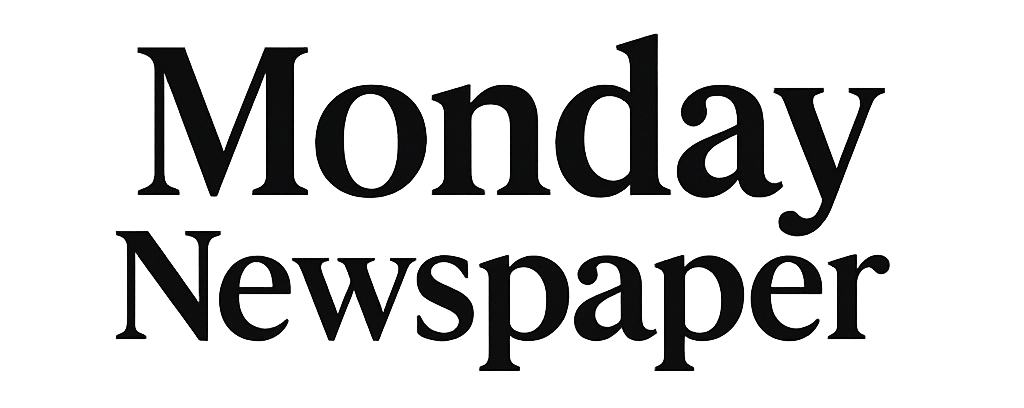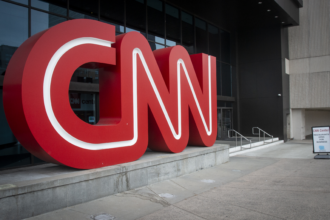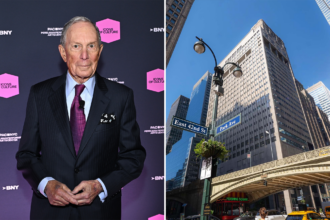The Fed’s preferred inflation gauge came in as economists expected for July – but major companies this week warned of incoming price hikes on a slew of everyday goods.
The US government said Friday its personal consumption expenditures index, or PCE, rose 2.6% on a yearly basis, a flat reading that boosted bets that the Federal Reserve will finally cut interest rates next month.
Still, core PCE – which excludes volatile food and energy prices – rose 2.9% versus a year ago, slightly above expectations and a bit higher than the overall index.
“That means tariffs are beginning to take a toll on pricing, and I expect tariffs to roll through into additional price increases over the next few months as retailers use up their pre-tariff inventories,” Kenin Spivak, chief executive of SMI Group, told The Post.
Hormel Foods, which owns Spam and Planters nuts; JM Smucker, home to Folgers coffee and Jif peanut butter; and Ace Hardware warned consumers this week that price hikes are on the way.
Giant retailers like Walmart, Target, Best Buy and Dollar General said they have already been forced to raise prices on some items.
But even a higher PCE reading wouldn’t have been enough to dash hopes for a rate cut, after Fed Chair Jerome Powell earlier this month signaled that the labor market is now a larger concern than inflation.
Powell also said that the impact of tariffs might be “short-lived – a one-time shift in the price level.”
“It’s not that tariffs are all good,” Spivak told The Post. “Rather, it’s that the impact on pricing is discrete, limited and not a factor that justifies higher interest.”
And a one-time price increase doesn’t mean it will show up in the data all at once. There’s a possibility it could even take several months to fully work its way through the economy, Spivak said.
Doug McMillon, chief executive of Walmart, noted that the chain has seen middle- and low-income consumers pulling back on some purchases due to economic anxiety.
“While consumer sentiment is still sour, what consumers do is more important to the economy than what they say. Consumers continued to spend and support the economic expansion in July,” Bill Adams, chief economist for Comerica Bank, said in a note Friday.
Adjusted for inflation, consumer spending rose 0.3% in July – the most in four months, according to the Bureau of Economic Analysis.
Spending was driven by income growth, though it’s unclear how long this momentum will last as more businesses start to pass along tariff costs to consumers.
Wages and salaries, which were not adjusted for inflation, jumped 0.6% – the most since November. Real disposable personal income ticked up 0.2%.
Data released Thursday showed US gross domestic product – which measures spending on goods and services – expanded at a 3.3% annual pace from April through June.
That came in above an initial 3% estimate and represented a sharp rebound from the 0.5% contraction in the first quarter – when companies raced to import and stockpile goods ahead of President Trump’s tariff deadlines.
Analysts now expect the economy to adjust to tariffs, especially as final rates roll in, and grow at a modest pace.
“There’s a big disconnect right now from economic activity data like GDP, consumer spending, and incomes, and the job market data, like payrolls growth,” Adams said.
Economists project data next week will show job growth to be less than 100,000 for a fourth month, which would be the weakest stretch of employment data since 2020.
Unemployment is also expected to tick up.
“If the August jobs report shows hiring is still weak and slack in the job market is widening, it will probably clinch the case for a rate cut at the September decision,” Adams added.
Stocks fell Friday after notching new records the day before, with the Dow Jones slipping nearly 100 points, or 0.2%, while the S&P 500 and Nasdaq dropped 0.6% and 1.2%, respectively.
“Although September is typically the weakest month of the year on average, we don’t see anything on the horizon to knock this bull market off its path,” Chris Zaccarelli, chief investment officer for Northlight Asset Management, said in a note Friday.
“If anything, if there is any volatility in September or October – which would be typical for this time of year – it will likely prove to be a great buying opportunity as we are setting up to rally into year end, especially if the Fed is cutting rates outside of a recession.”










